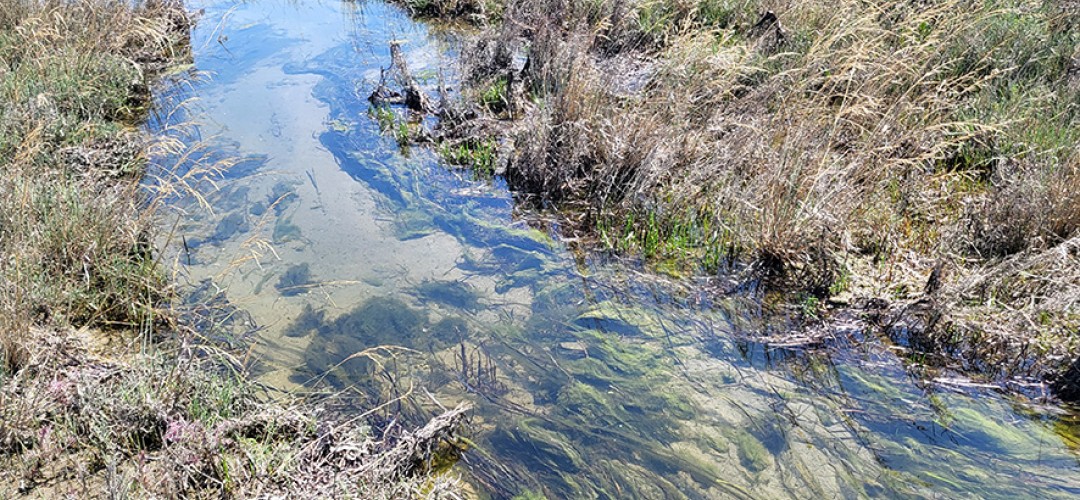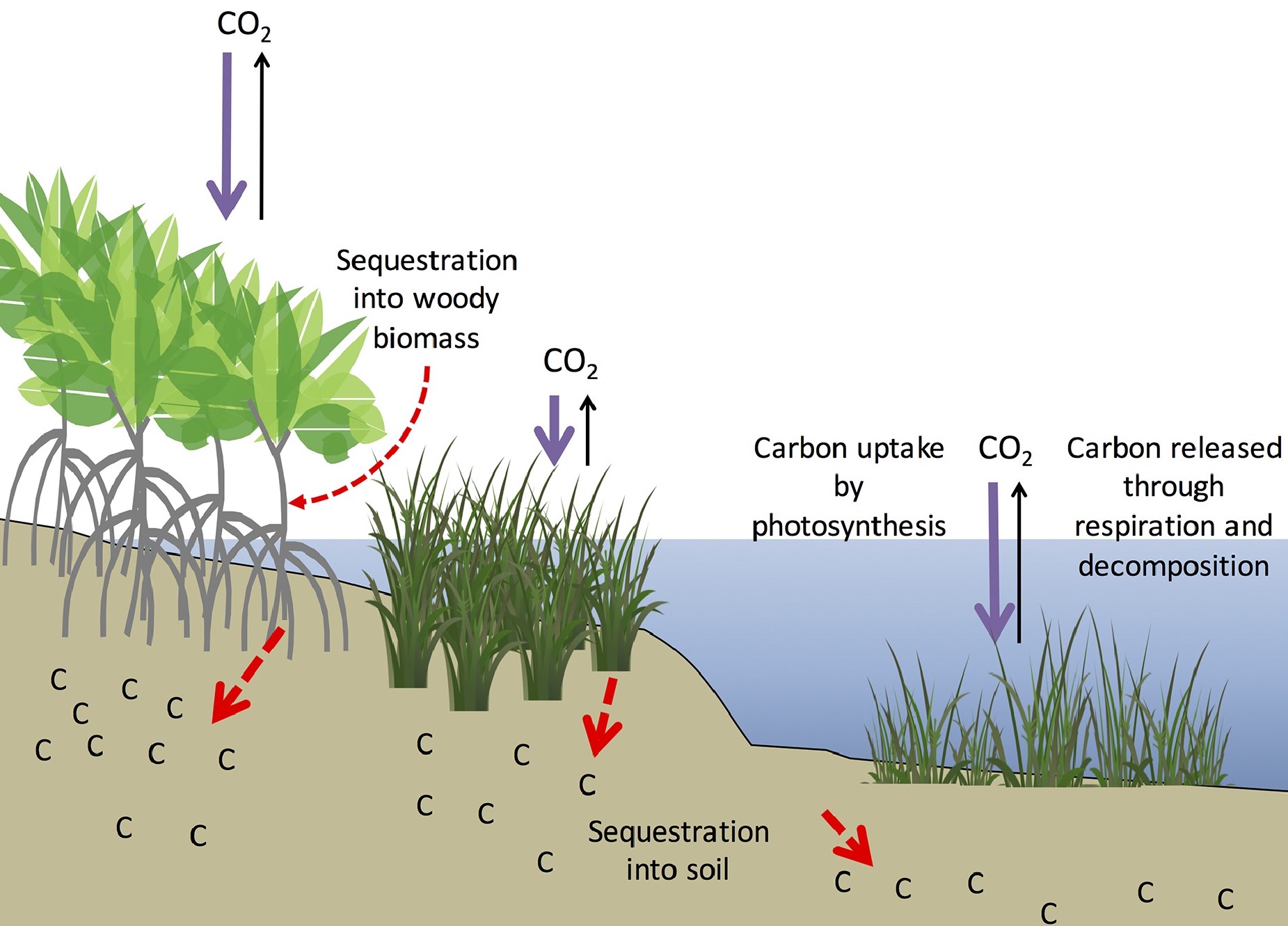Some of the most inspiring papers on blue carbon guiding Vital
Inspiring papers on blue carbon

Blue Carbon is a term that was coined in 2009 to draw attention to the degradation of marine and coastal ecosystems and to the urgency to conserve and restore them to mitigate climate change and to meet the ambitious emission reduction targets set at the Paris Agreement in 2015 and reiterated in the Kunming-Montreal Global Biodiversity Framework last year. Mangroves, seagrasses and salt marshes are the main Blue Carbon Ecosystems (BCEs), with recognition of kelp forests more recently. Research on this is growing exponentially.
Here we summarise only some of the main articles that inspired the work of Vital from its onset to now.
In 2011 MacLeod et al. wrote a “blueprint” for blue carbon. This paper summarises key studies and provides some data extrapolated from literature regarding global carbon (C) stock and burial rates in BCEs and comparisons with terrestrial ecosystems. This work shows that BCE have a ten-fold capacity to bury carbon compared to their terrestrial counterparts. It is, however, evident that the error bars associated with these amounts are large. In the cited-by-many report by Murray et al. 2011 the reported value of sequestration by saltmarshes is 8.0 ± 8.5 t CO2 e ha−1 y-1. This large variability derives from significant differences between locations sampled.
MacLeod et al. 2011 concludes with the necessity for improving quantification methods and determining the drivers of variability in carbon (C) sequestration rates and the role of climate change in long-term C storage.

Some methodologies for accounting have since developed, in particular in response to the emergence of BCE in carbon markets. Sapkota & White (2020) provides a summary of these. The most applicable to saltmarsh restoration work is the VM0033 methodology developed by “Restore America’s Estuaries” also published in an article by Needelman et al. 2018. This methodology includes all of the relevant components, accounting method options (for example field data, published values, or models) and default /published values that could be used in the absence of local data.
Lovelock et al. (2022) also presented a novel methodology “BlueCAM” developed in Australia (but applicable beyond), and in the paper presents all of the components that are accounted for, relative equations. Alongside other small differences between this and the previously described approach, the key distinction is the exclusion of carbon from outside sources (allochthonous).
This triggered the responses of Gallagher et al. 2022 (among others) who wrote two articles - firstly disagreeing with some elements of the BlueCAM method and another to provide a novel framework to rethink and re-evaluate the concept of carbon sink, incorporating longer time scales (climatic time periods) and considering changes in sediment properties.
Beyond simple accounting, Macreadie et al. 2021 propose an accessible summary paper, highlighting both the history of BCE, the global distribution of BCEs and global estimates of carbon sequestration, while also highlighting the need for the prioritisation of preserving existing wetlands.
In terms of restoring degraded wetlands, Macreadie et al (2017) provided some inspiration regarding practical actions, for example restoring hydrology, vegetation diversity, decreasing nutrient inputs, improving the trophic chain, balancing the number of invasive species and predators.

The importance of considering the whole ecosystem was also at the forefront of a new article by Schmitz et al. (2023), considering the carbon sequestration of all ecosystems and proposing that protecting and restoring wild animals and their functional roles can enhance natural carbon capture and storage.
The article by Macreadie et al. 2021, also highlights the importance of considering the associated co-benefits of BCE instead of focusing simply on the “carbon”, and that’s indeed the stance of the Vital initiative.
A comprehensive landscape-scale appreciation of natural capital fully leverages the capacity of the lagoon ecosystem not only to sequester carbon, and provide other services that are valuable for society, but also to ensure the resilience of the salt marsh and associated habitats in the face of challenges from a changing climate future.
◾